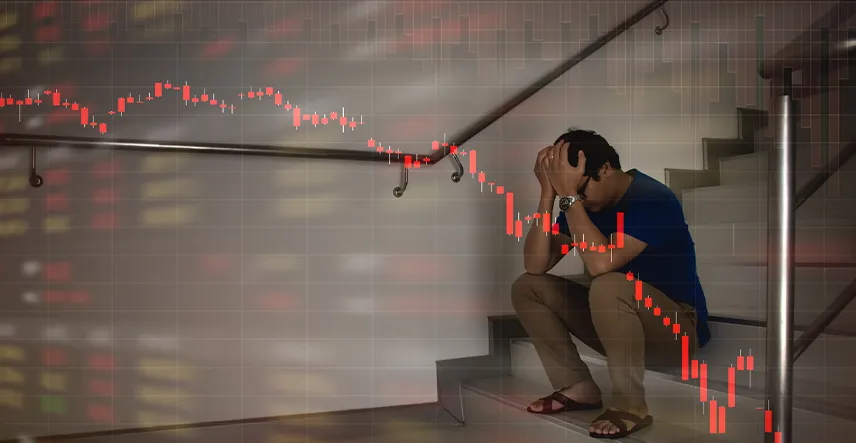
In the context of the Indian stock market, rollover refers to the practice of transferring open positions in a futures or options contract from the current month to the subsequent month. As these contracts have finite durations, necessitating expiration on specific dates, investors looking to maintain their positions beyond the current month engage in a rollover. However, this manoeuvre incurs additional costs, including brokerage fees and potential price variations between the two months, providing a seamless means for investors to sustain their positions without the need to sell and re-enter the market. Let us understand this concept b
Table of Contents
Understanding Rollovers
Rollover percentages, which measure the proportion of rolled positions to all positions, lack a clear baseline. The common procedure is to compare a rollover percentage with its trailing three-month average, while some analysts may notice absolute changes in rollover numbers.
- Rollover is a simple indicator of an investor’s propensity to wager in the market.
- As a result, rollovers that are lower than normal indicate caution, whereas high rollovers indicate a strong feeling. As a result, any imbalance in long or short holdings reveals which way the market is betting.
- Rollovers are also interpreted by analysts in terms of costs. When rolling over a position, a trader can, for example, join the contract for the following month at a discount to its inherent value. To put it another way, the rollover might occur at a significant expense of carrying; consequently, it would show how bullish the market is.
F&O Trading Strategies
The array of futures techniques may not be extensive, but they serve diverse purposes such as market speculation, hedging, and arbitrage. Hedging with futures is achievable through protective put options or by maintaining a cash market position while selling higher call options, known as a covered call. More intricate strategies, like strangles, involve betting on volatility shifts rather than market directions, offering flexibility as they benefit from either rising or falling conditions. Additional variations in futures trading include butterflies, collars, straddles, bull call spreads, and bear put spreads, among others. Our user-friendly options trading platform is designed to cater to both beginners and experienced traders, facilitating easy engagement with various strategies.
What is Rollover in Stock Market Functioning?
Every month, on the last Thursday, decisions and settlements regarding equity derivative contracts are made in India. If Thursday is a holiday, the settlement takes place on Wednesday, the day before Thursday. While rollovers are performed up until the end of that day’s trading hours, some of them start a week before the expiration date. On the trading terminal, however, holdings are carried over to the subsequent month using a spread window.
Changing FX Positions
Long-term forex day traders who trade from the rollover equation’s positive side can profit from the market. Swap points, which are measured in pips and represent the difference between a particular currency pair’s forward rate and spot rate, are first calculated by traders. The assumption that investing in different currencies should produce hedged returns that are identical, independent of the currencies’ interest rates, is the basis on which traders base their estimates. When calculating swap points for a specific delivery date, traders take into account the profitability of lending a currency and borrowing another against it in the time between the current value date and the forward delivery date. As a result, the trader is profitable when the interest rollover payment is in his favour.
Credit and Debit Rollover
Rollover, or tomorrow next, proves advantageous in the foreign exchange market, particularly for traders who aim to capitalise on exchange rate fluctuations without physically acquiring the purchased currency. Given that forex transactions entail borrowing one nation’s currency to buy another, earning and paying interest is routine. At the end of each trading day, traders holding a long position in a high-yielding currency relative to the borrowed currency see their accounts credited with interest.
Note: A trader will be required to pay interest if they borrow money with a greater yield curve than they originally paid for it. Traders who do not intend to collect or pay it back should close their holdings by 5 p.m. Eastern time. A currency trader should be aware that the IRS views interest received or paid during these forex activities as conventional interest income or expense. The currency trader should segregate their typical trading gains and losses from the interest they receive or pay for tax purposes.
Conclusion
Comprehending rollovers in the stock market is crucial for investors navigating the complexities of futures and options trading. Rollovers offer a strategic mechanism to manage open positions, allowing investors to extend their exposure from one contract month to the next. This practice involves considerations such as costs, market conditions, and the investor’s outlook. By understanding and effectively utilising rollovers, investors can enhance their flexibility and adaptability in response to changing market dynamics, contributing to informed decision-making and successful trading strategies.